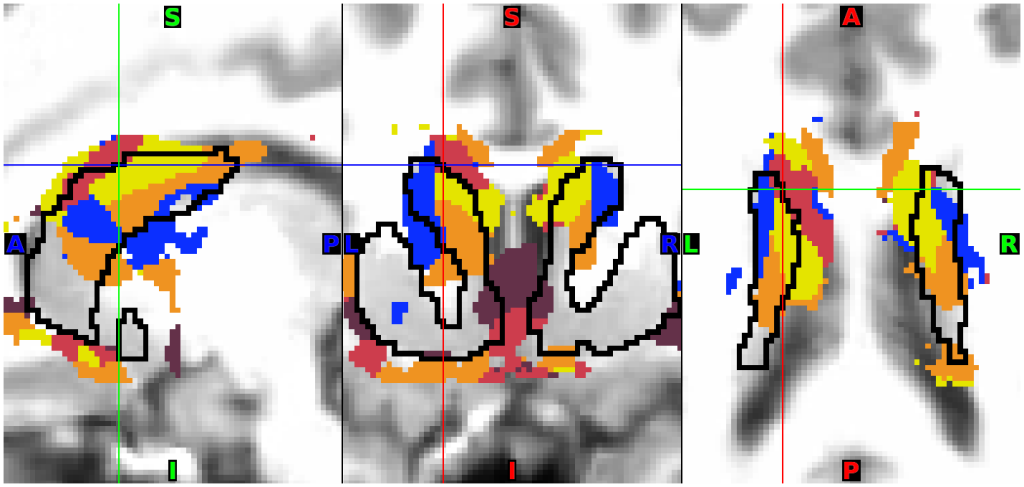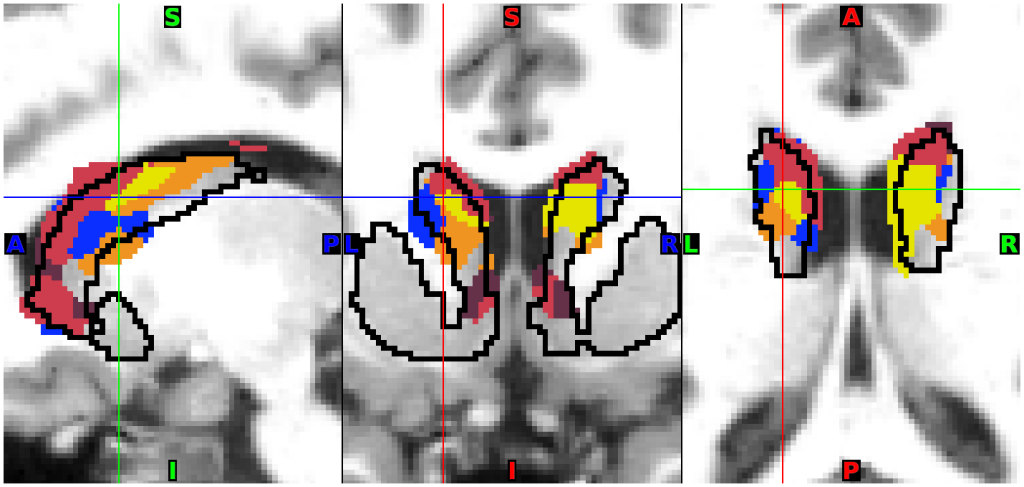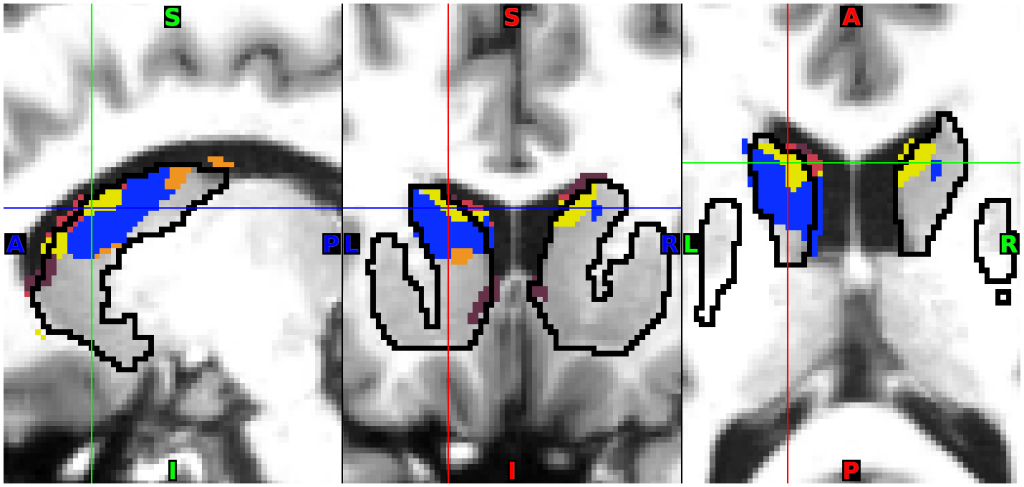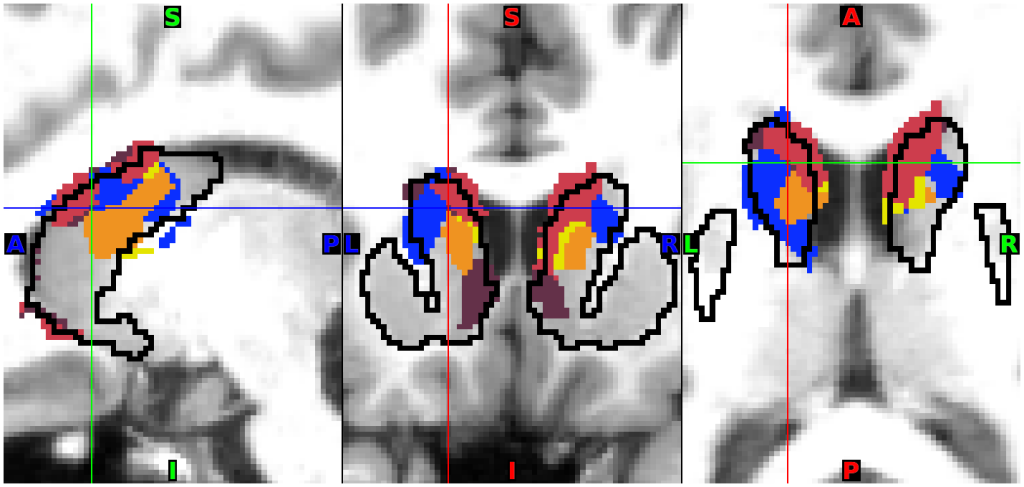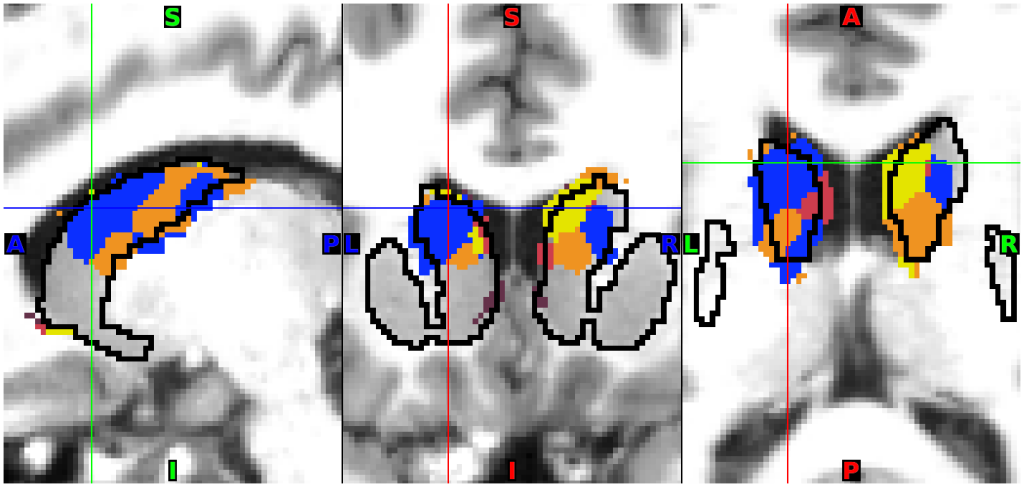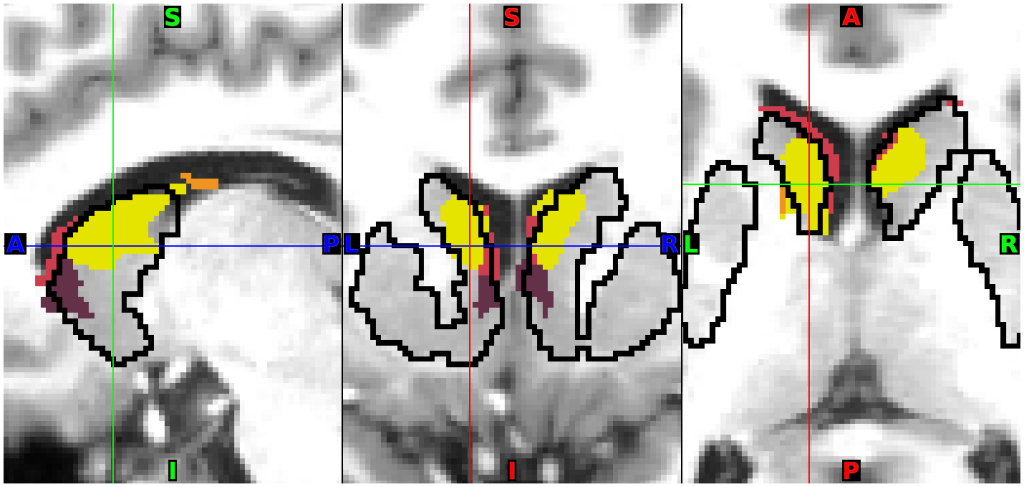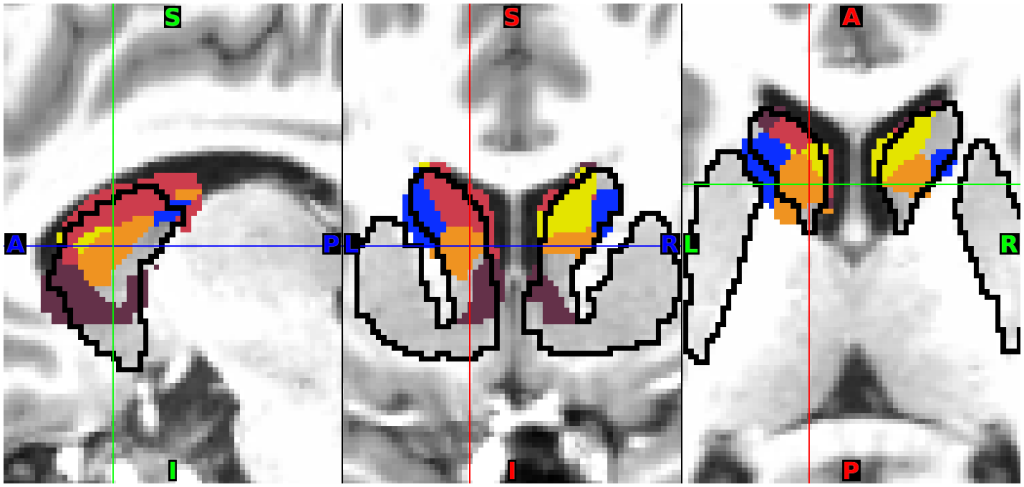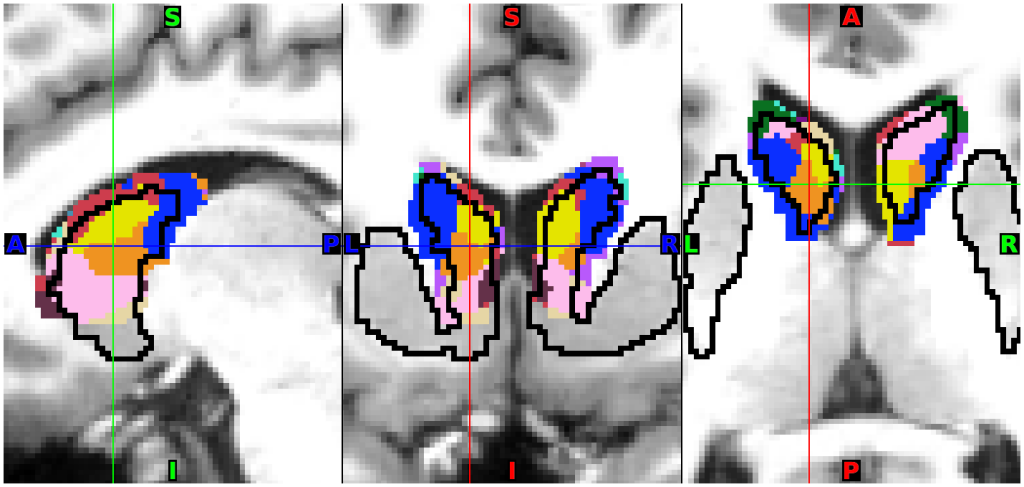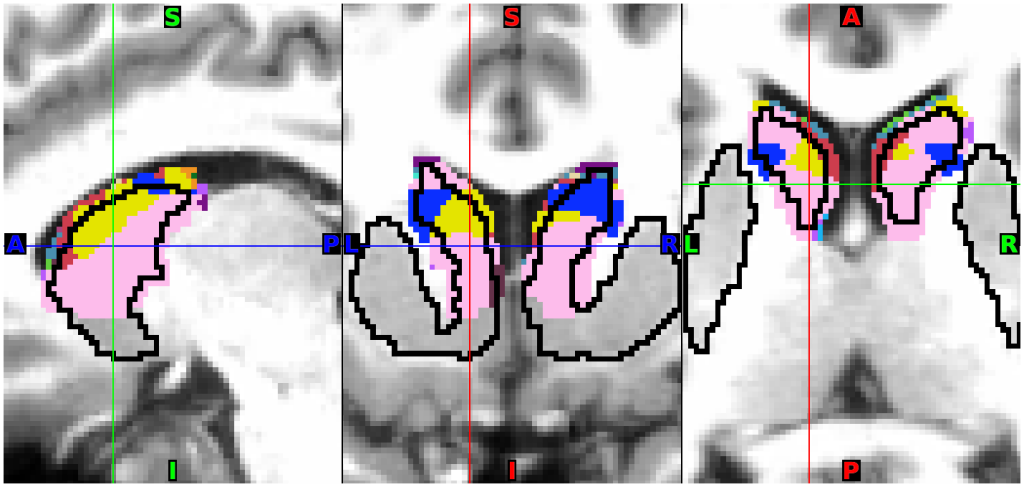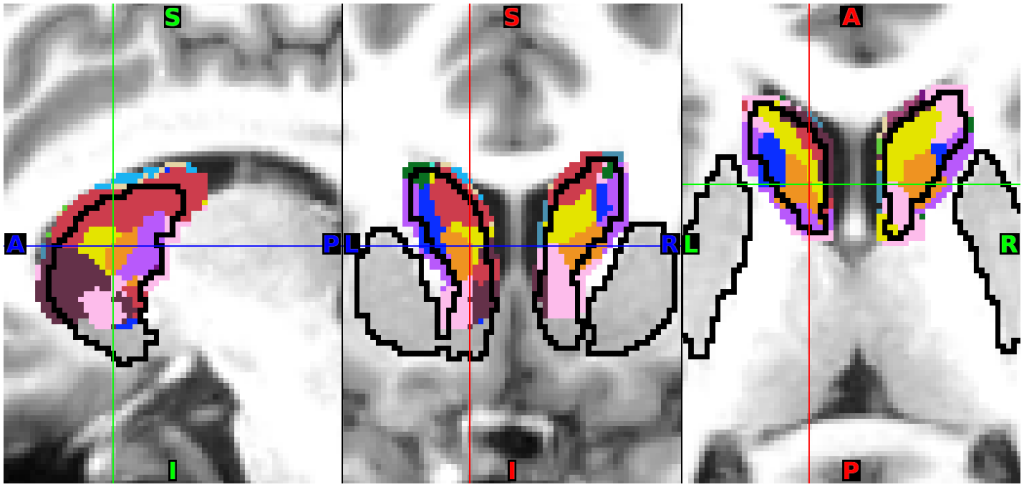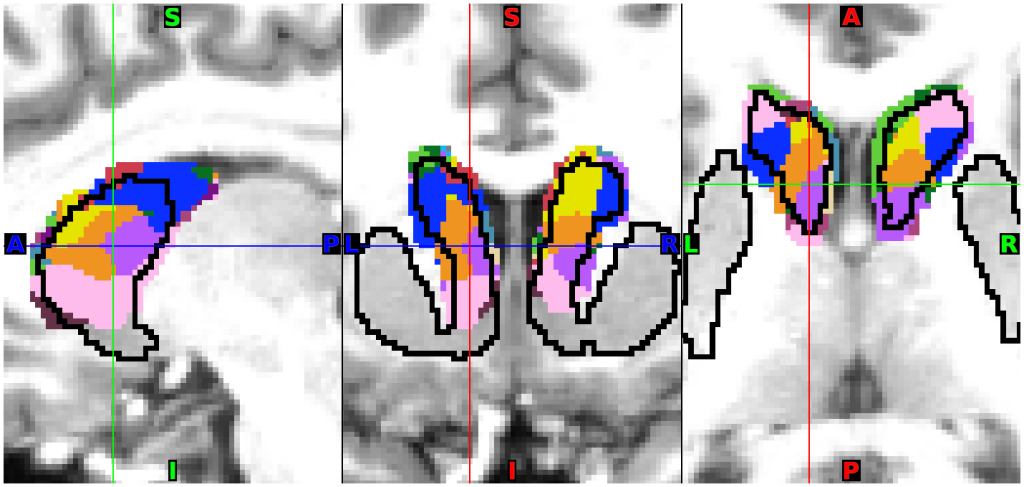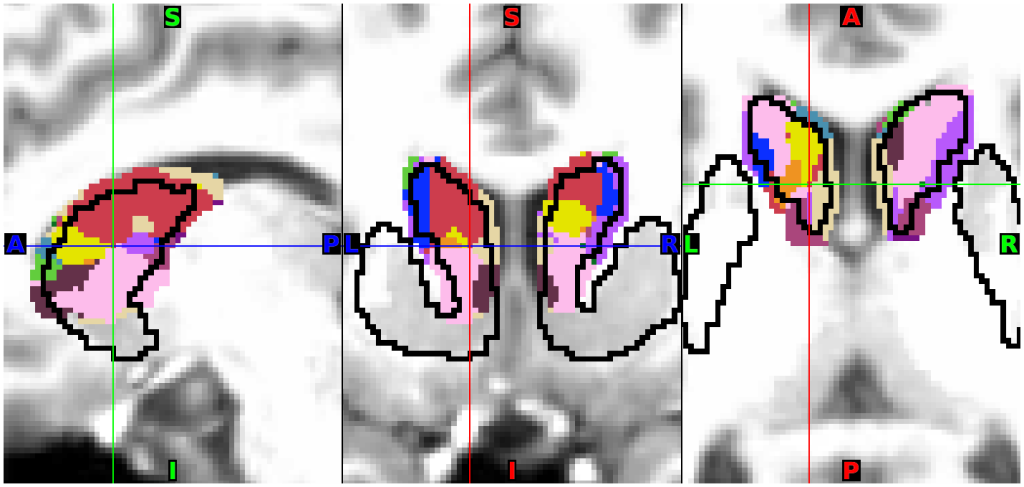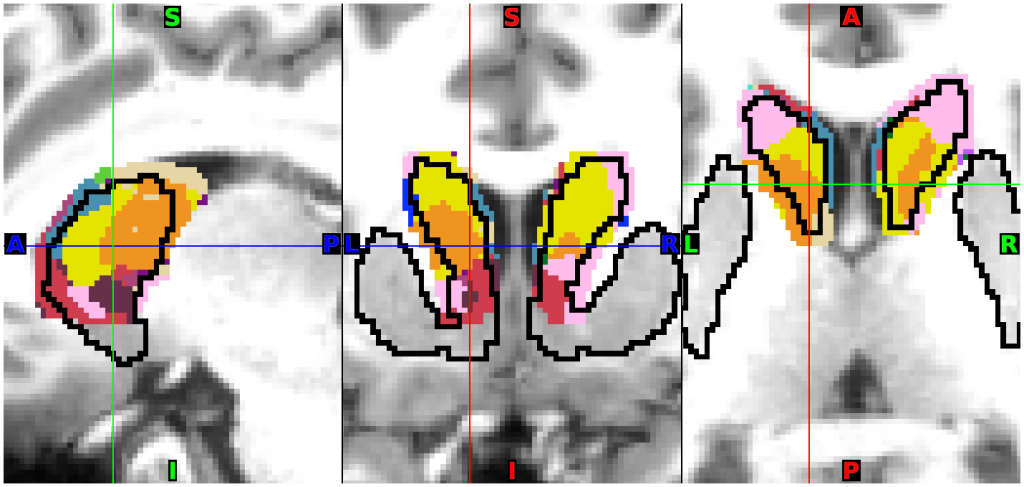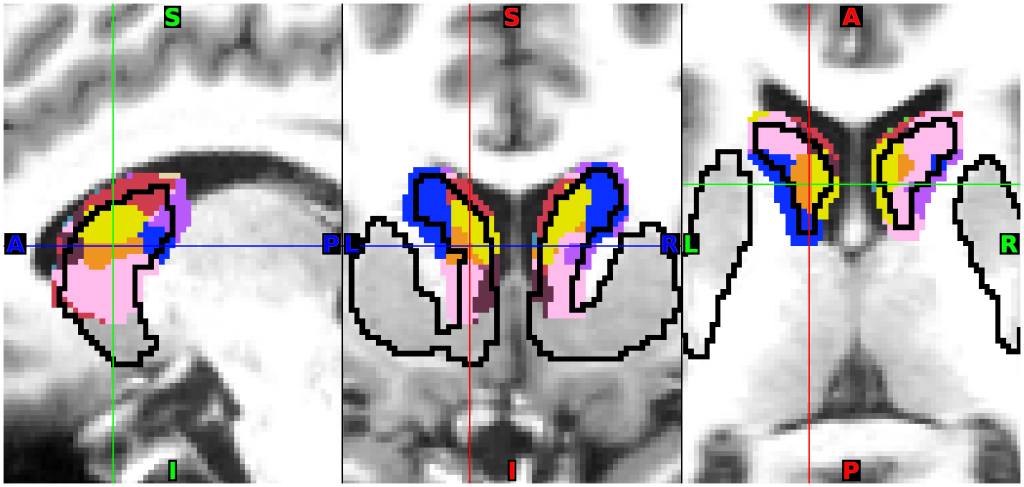FULL TITLE:
Human Striatal Association Megaclusters
SPECIES:
Human
DESCRIPTION:
There is one .spec file for each participant that includes caudate parcellations, striatum segmentation, mean BOLD image, and mean tSNR image. For S1 and S2, the .spec files additionally include parcellations of the entire striatum and results for smoothed (4 mm FWHM) and unsmoothed (0 mm FWHM) data and for excluding voxel assignments with low correlation values.
ABSTRACT:
The striatum receives projections from multiple regions of the cerebral cortex consistent with the role of the basal ganglia in diverse motor, affective, and cognitive functions. Within the striatum, the caudate receives projections from association cortex including multiple distinct regions of prefrontal cortex. Building on recent insights about the details of how juxtaposed cortical networks are specialized for distinct aspects of higher-order cognition, we revisited caudate organization using within-individual precision neuroimaging initially in two intensively scanned individuals (each scanned 31 times). Results revealed that the caudate has side-by-side regions that are coupled to at least five distinct distributed association networks, paralleling the organization observed in the cerebral cortex. We refer to these spatial groupings of regions as striatal association megaclusters. Correlation maps from closely juxtaposed seed regions placed within the megaclusters recapitulated the five distinct cerebral networks including their multiple spatially distributed regions. Striatal association megaclusters were explored in 15 additional participants (each scanned at least 8 times) finding that their presence generalizes to new participants. Analysis of the laterality of the regions within the megaclusters further revealed that they possess asymmetries paralleling their cortical counterparts. For example, caudate regions linked to the language network were left-lateralized. These results extend the general notion of parallel specialized basal ganglia circuits, with the additional discovery that even within the caudate, there is fine-grained separation of multiple distinct higher-order networks that reflect the organization and lateralization found in the cerebral cortex.
PUBLICATION:
Journal of Neurophysiology
- DOI:
10.1152/jn.00387.2023
- Heather L. Kosakowski
- Noam Saadon-Grosman
- Jingnan Du
- Mark C. Eldaief
- Randy L. Buckner
- Department of Psychiatry, Massachusetts General Hospital, Charlestown, MA 02129, USA
- Athinoula A. Martinos Center for Biomedical Imaging, Massachusetts General Hospital (RLB)
- Department of Psychology, Center for Brain Science, Harvard University
-
strClust.scene
SCENES:- S01 Parcellations
- S02 Parcellations
- P01 Parcellations
- P02 Parcellations
- P03 Parcellations
- P04 Parcellations
- P05 Parcellations
- P06 Parcellations
- P07 Parcellations
- P08 Parcellations
- P09 Parcellations
- P10 Parcellations
- P11 Parcellations
- P12 Parcellations
- P13 Parcellations
- P14 Parcellations
- P15 Parcellations


